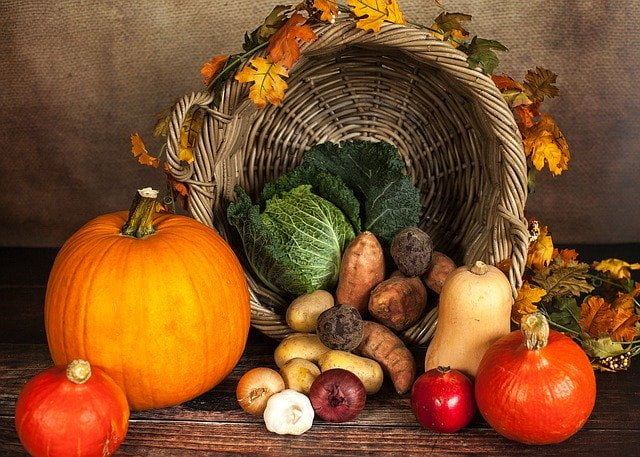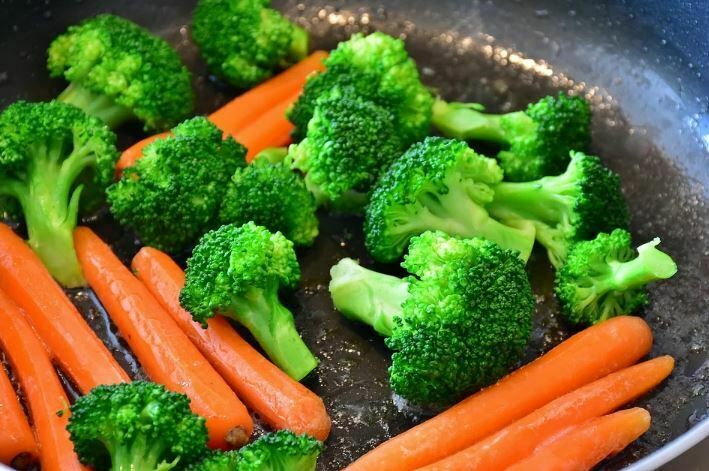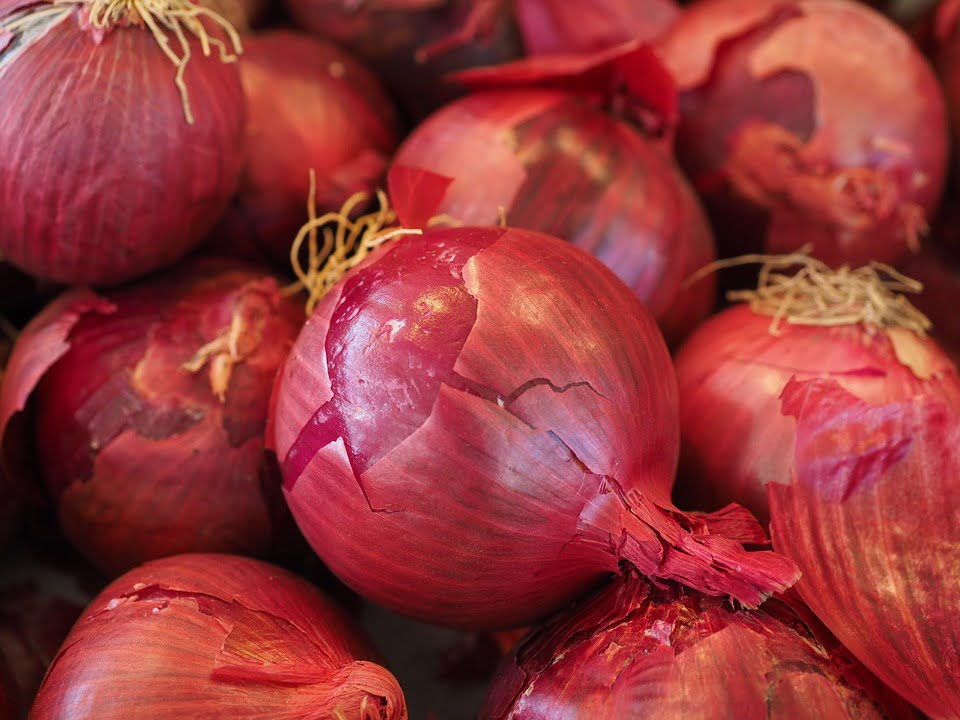The Doctor in your kitchen

Vegetables are good for your health. They are low in calories but high in vitamins, minerals and fiber. There is compelling evidence that a diet rich in fruits and vegetables can lower the blood pressure, reduce the risk of heart disease, stroke, and prevent cancer. Eating vegetables and fruits can lower risk of eye and digestive problems, promote weight loss and help keep appetite in check. The results in some of the studies have shown that fiber in the vegetables makes you feel full faster; which is another reason why it’s next to impossible to overeat veggies. Vegetables also make life interesting because there are hundreds of different vegetables and even more ways to prepare them. Logically one-half of your plate should be made of fruits and vegetables.
Here is a list of healthiest vegetables you should be eating to improve your health and well-being:
CAULIFLOWER (Gobhi)
The word Cauliflower is derived from Italian word ‘cavolfiore’ meaning “cabbage flower”. It is a rich source of vitamins, minerals, electrolytes, protein, natural sugar, and dietary fibers. 100 g of fresh cauliflower provides about 80% of daily recommended value of Vitamin-C – a proven antioxidant that helps fight against harmful free radicals, boosts immunity, and prevents infections and cancers. It als contains good amounts of B-complex groups of vitamins and minerals such as manganese, copper, iron, calcium and potassium.
Studies have shown that consumption of dietary fibre contained in Cauliflower may help regulate the immune system and decrease the risk of inflammation-related conditions such as cardiovascular disease, diabetes, cancer, and obesity. A higher fibre diet can help lower blood pressure and cholesterol levels, improve insulin sensitivity, and enhance weight loss. Being a low-carb vegetable it can feel lighter and healthier.
Studies have shown that eating cauliflower can significantly reduce the risk of cancer growth and proliferous of breast, bladder, colon, prostrate and ovaries cancer cells.
CABBAGE (Patta Gobhi)
It is a good source of vitamin C that boosts the immune system and helps fight disease-causing virus and bacteria. Eating cabbage is good for our stomach and keeps our digestive system healthy. The fibre present in cabbages can make you feel full for a long time and suppress hunger pangs. A 100g serving of cabbage has as little as 25 calories making cabbage ideal for weight loss. The dietary fibers help relieve constipation and ensure that the waste is easily excreted out without any trouble.
The Cabbage is very low in calories, but that is rich in vitamins, minerals and antioxidants. Its anti-inflammatory properties help to protect the body against infection or speed up healing. It also helps reduce chronic inflammation due to heart disease, rheumatoid arthritis and inflammatory bowel disease.
FRENCH BEANS: (Phali)
Contrary to what their name’s suggests French beans do not owe their origin to America where they have been grown as an indigenous crop for the past 5,000 years. Spanish and Portuguese explorers introduced them to Europe and Africa, and by the nineteenth century the slim pods became so popular in France that they came to be called “French” beans. Beans are said to be members of Phaseolus vulgaris bean family. Today more than 200 varieties of green beans are consumed worldwide– which come in different shapes, colors and names, like French beans, fine beans, string beans, or even squeaky beans, depending on the region of the world! A rich source of folic acid, calcium and fiber, they contain low calories, sodium, saturated fats and cholesterol. French beans are rich in silicon (needed for healthy bones, skin, and hair). French beans are a great source of protein and ideally recommended for individuals who want to lose weight or are calorie-conscious.
A number of studies have suggested that plant foods such as green beans decreases the risk of obesity, diabetes, heart disease, and overall mortality. The fiber content lowers the risk of certain cancers, heart disease, and boosts vision. The fiber in the beans also promotes digestive health; calcium promotes bone health, while lutein and zeaxanthin boost vision. Studies show that green beans can induce beneficial metabolic effects people with diabetes. Beans, in general, are also known to be a good source of calcium which is good for strong bones. French beans are a rich source of vitamins A, B, C, and K which lower the risk of depression and promote mental health.
EGGPLANT (Baingan):
Eggplant also called brinjal originates from the nightshade family of plants. It is rich in fiber and low in calories. Eggplant is available in different colors, sizes, and varieties. This vegetable (technically a fruit) also contains vitamins, minerals, and antioxidants that help promote heart health, control blood sugar levels, reduce cancer risk, improve cognitive function, and aid weight loss. Eggplant contains nutrients like calcium, magnesium, and potassium that help promote bone strength. Eggplants are rich in vitamins, minerals, anthocyanins (natural plant compounds), and antioxidants which make the skin glow, slow down aging, help improve bone mineral density, and reduce the risk of osteoporosis.
According to a study conducted by the University of Connecticut School Of Medicine eggplants have cardio-protective properties and are beneficial for the heart. Other studies have found that consumption of eggplant helps control high blood pressure regulate blood sugar levels and control the absorption of glucose. Eggplant is high in water content, low in calories, and has high fiber content that keeps you satiated and helps lose with weight. Eggplants are also believed to be rich in calcium, iron, magnesium and several other important nutrients.
GREEN PEAS (Matar)
Strictly speaking, green peas are not vegetables. Green peas, are the small, spherical seeds that come from pods produced by the Pisum sativum plant. They are part of the legume family, which consists of plants that produce pods with seeds inside. Lentils, chickpeas, beans and peanuts are also legumes. They have been part of the human diet for hundreds of years and are consumed all over the world.
Green peas are one of the most nutrient dense foods rich in essential vitamins and antioxidants like vitamin K, C and folate. Green peas are also rich in minerals, fiber protein, and fibre but fairly low in calories. Green peas have a low glycemic index and are rich in fiber and protein, all of which are important factors for blood sugar control. Green peas are rich in fiber which does wonders to your digestion. The high fibre content helps in maintaining good digestive health and adds bulk to the stool, enhancing smooth bowel clearance. Peas are a good source of iron and vitamin C, which makes it one of the best immunity building foods. Green peas may also help prevent and treat some chronic diseases, such as heart disease, cancer and diabetes.

BROCCOLI
Generally touted as one of the healthiest vegetables, Broccoli is a good source of fibre, protein, iron, potassium, calcium, selenium and magnesium as well as the vitamins A, C, E, K and folic acid. Various studies have found that consuming broccoli regularly lowers the risk of cardiovascular disease by reducing the cholesterol in the body and thus reduce the risk of heart disease. There is consistent evidence which shows that Vitamin K an essential nutrient facilitates blood clotting, and keep our bones healthy and strong. Whilst more research is needed, that vitamin K can improve bone health in general as well as increasing bone mineral density and reducing fracture rates in those with osteoporosis. It also helps reduce age-related eye disorders, such as cataract, macular degeneration and night blindness.
CARROTS (Gajar)
Carrot appears to have originated in Iran and Afghanistan from where it spread to Europe and rest of the world. Today they are widely cultivated in China, followed by United States and Russia and are one of the most popular foods consumed worldwide.
Carrots are a rich source of beta carotene, dietary fiber, antioxidants, minerals, vitamin K1, and potassium. They’re rich in beta-carotene, a compound your body changes into vitamin A, which helps keep your eyes healthy, protects them from the sun and lowers the chances of cataracts and other eye problems. Eating carrots can help fight off harmful free radicals in your body, and lower the risk of cancer. Carrots are also good for your heart, help control your blood pressure and weight and reduce the chances of heart disease.
GINGER (Adrak)
Ginger is among the healthiest spices on the planet, loaded with bioactive compounds that have powerful benefits for your body and brain. It belongs to the Zingiberaceae family, and has a long history of use in alternative medicine against indigestion, nausea, flu, common cold, and other such ailments. Ginger has powerful anti-inflammatory and antioxidant effects and is supposed to relieve muscle and joint pain, as well as exercise-induced muscle soreness. Some studies have shown that ginger is beneficial for people with indigestion, digestion related stomach discomfort or menstrual pain.
Studies have suggested that ginger is effective against many types of cancer and can reduce total cholesterol, blood triglycerides and benefit those suffering from respiratory infections or osteoarthritis
SPINACH: (Palak)
Spinach is a leafy green vegetable rich in vitamins A, C and K, magnesium, iron and manganese. It is good for eye-health, and helps reduce oxidative stress and blood pressure levels among others. Spinach is a good source of Vitamin K, Calcium, vitamin D, dietary fibre, potassium, magnesium and vitamin C, all of which are good for bone health. It helps improve your eyesight and boost your immune system. Spinach is rich source of vitamin A which is good for the growth of all bodily tissues, including skin and hair. It also helps our skin and mucous membranes to repel various kinds of bacteria and viruses and thus reduce the risk of hair loss and infections.
GARLIC (Lahsun)
as Hippocrates the ancient Greek physician and father of modern medicine said, Garlic a member of the Allium (onion) family is said to be loaded with many health and medicinal properties. Garlic is low in calories but rich in vitamin C, vitamin B6 and manganese. Garlic intake helps control blood pressure while preventing and reducing illnesses like the flu and common cold. Garlic contains antioxidants that protect against cell damage and aging. Besides improving the taste intake of garlic can improve bone health, improve physical performance and help you live longer.
LADYFINGER (Bhindi)
It is a commonly found vegetable all over the world. Lady finger or Bhindi contains Vitamin C which helps in improving immunity. Ladyfinger contains soluble fiber pectin which helps in lowering bad cholesterol and helps in the eliminate cholesterol deposits and clots. Consuming lady finger is good for the eyesight, weightloss and helps in case of constipation. Regular consumption of lady finger promotes digestion, regularization of bowels and easier elimination of waste from the intestine. Ladyfinger contains iron and folate and Vitamin K helps check on the haemoglobin level thus promotes against anaemia.
Among others fiber content in lady finger (Bhindi) helps slow down absorption of sugar from the bloodstream. Hence it helps in avoiding sugar spikes after the meal and stabilizes the blood sugar levels. Ladyfinger is also a proven home remedy against dandruff and lice.
BITTER GOURD (Karela)
Not many people know that bitter gourd or karela is a fruit not a vegetable. Bitter gourd has a number of medicinal properties. Consumption of bitter gourd juice has a wide range of benefits. Bitter gourd is a good source of nutrients like dietary fiber, iron, vitamin C, folate, magnesium, and potassium. According to the USDA, 100 grams of bitter gourd has about 34 calories with 13 milligram sodium, 602 grams potassium, 7 grams total carbohydrate and 3.6 grams protein. Research suggests that bitter melon contains certain compounds with cancer-fighting properties, and reduces the blood glucose levels in both type I and type II diabetes.
Some of the other benefits of bitter gourd include the fact that it reduces LDL (bad cholesterol), decreases the risk of heart attack, helps unclog the arteries, detoxifies the liver, helps improve bowel movement, relieves constipation and is good for the skin. It also reduces ageing, fights acne and is useful in treating skin infections like ringworm, psoriasis, and itching. Its juice adds lustre to the hair, combats dandruff, hair loss, and split-ends.
FENUGREEK (Methi)
Fenugreek is a popular herb with proven medicinal properties. Fenugreek is recommended for digestive problems such as loss of appetite, upset stomach, constipation, or inflammation in the stomach. It is said to be good for diabetes, painful menstruation, or people suffering from obesity or heart problems like “hardening of the arteries” and for high cholesterol and triglycerides.
Fenugreek is useful for breast-feeding mothers to promote lactation and increase breast milk flow. Studies have shown that use of fenugreek (one gram a day) helps lower blood sugar and insulin response. Recent studies have suggested that fenugreek may increase libido in both men and women.
Fenugreek is used as a poultice- wrapped in cloth, warmed, and applied to the skin to treat wounds, inflammation, muscle pain, and swelling of lymph nodes, gout, and eczema.
Fenugreek extracts are used to make soaps and cosmetics.

ONION (Pyaz)
Onions are said to have been cultivated in central Asia over 5000 years ago. As early as the sixth century, the famous medical treatise Charaka-Sanhita celebrated the onion as medicine — a diuretic good for digestion, the heart, the eyes, and the joints.
To date Onions are among the most cultivated crops because they were less perishable, easy to grow in a variety of soils and climates. Onions prevent thirst and can be dried and consumed later. While the place and time of the onion’s origin is still a mystery, many documents from very early times describe its importance as a food and its use in art, medicine, and mummification. Onions help prevent plaque buildup in the arteries, and thus reduce the risk of heart attack and stroke.
They are excellent sources of vitamin C, sulphuric compounds, flavonoids and phytochemicals. Studies have shown that they may help reduce the risk of Parkinson’s disease, cardiovascular disease and stroke. According to the National Onion Association USA, Onions not only provide flavor, but also provide important nutrients that are prized not only for their addition to our cuisine, but for their value-added health characteristics. Onions are high in Vitamin C, and a good source of dietary fiber, and folic acid. They also contain calcium, iron, and low in sodium. They contain no fat and help delay the oxidative damage to cells and tissue of the body and eliminate free radicals in the body.
According to a 2019 study in China regular consumption of allium vegetables (of which the onion is a member) reduces the incidence of colorectal cancer by as much as 79 percent.
Another study published in August 2019 showed a clear link between the amount of onions and garlic consumption and the reduced risk of breast cancer.
RIDGE GOURD (Turai)
It is a ridged and dark green vegetable with white pulp inside. Ridge gourd is a good source of medicinal properties. Extremely rich in dietary fibre it contains vital elements like Vitamin-C, zinc, iron, riboflavin, magnesium, thiamine and traces of other minerals. It has low saturated fat, cholesterol and calories that help weight loss. Ridge gourd is high in water content which helps to relieve from constipation. Consumption of Ridge gourd helps reduce the sugar levels in the blood and urine and improve eye sight. Ridge gourd helps purify blood and protects the liver from alcohol intoxication. It is good for skin, strengthens the immune system and helps blood purification clear from pimples and acne. Ridge gourd helps to curb acidity, ulcers and reduces burning sensation during urination.

